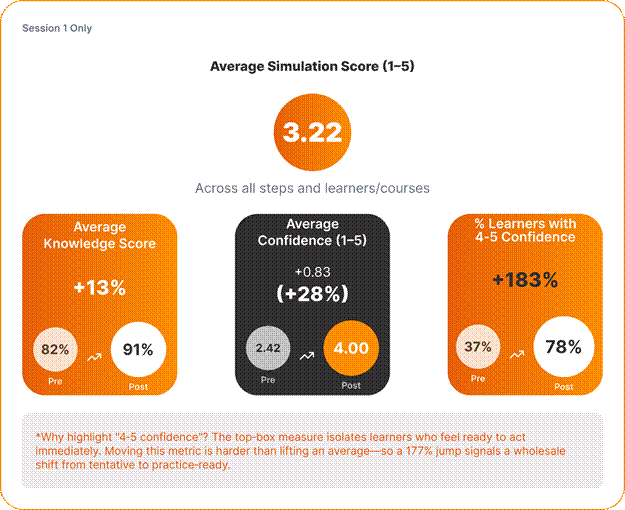
Effective communication is central to safe, patient-centered healthcare [1]. Breakdowns in information exchange contribute to diagnostic errors [2] and poor treatment adherence [1], while effective communication fosters greater patient trust [3]. Simulation-based education provides a controlled setting in which clinicians can practice history-taking, empathy and shared decision-making without risking harm to real patients [4]. However, traditional manikin- or actor-based simulations are resource-intensive, prompting interest in AI-powered virtual humans that can converse naturally and provide automated feedback [4,5]. Recent systematic reviews and scoping studies highlight the potential of these tools in communication training.
For example, a 2025 literature review identified 35 studies across 24 virtual patient platforms and found that these systems vary widely in design. It concluded that more advanced features and scenario diversity are needed to achieve high-fidelity simulations [4]. Another 2023 scoping review included only 12 studies, noting that current AI-based virtual patients often suffer from limited authenticity and a lack of natural language flow, which remain barriers to effective training [5]. Furthermore, pilot studies using lifelike AI avatars for end-of-life discussions have demonstrated measurable gains in clinicians’ empathy and communication clarity [6]. These findings frame the present work — a meta-analysis of single-session simulation activities using a unified AI-powered virtual human platform across 11 unique courses.
Multi-course Evaluation of Single‑session Simulations
This analysis aggregates data from 11 online simulation activities developed and delivered by Xuron between July 2024 and July 2025 across multiple healthcare domains (medical education, teamwork skills training, communication training, management training). Two activities were supported by independent medical education grants in partnership with a medical education company, while nine were directly commissioned by continuing medical education providers.
Each activity followed a structured learning journey: a pre‑activity assessment, multimedia micro‑modules, an AI‑driven virtual‑patient encounter (6–12 tasks), a post‑activity assessment, an automated feedback report and evaluation. All activities incorporated both knowledge‑based questions and interpersonal communications skills tasks aligned with communication objectives. The data set includes only those participants who completed the entire first session; there were 273 completers across the 11 activities. Weighted averages were calculated for each metric to accommodate differing sample sizes across activities.

Results
Key Performance Indicators (Weighted Averages)
The table below summarizes the weighted averages for the 273 completers. Learner performance was rated on a 1–5 scale based on fidelity to best-practice procedures during simulation tasks. Moreover, confidence was self-reported on a 1–5 scale, and knowledge scores were reported as percentages of correct answers.
Simulation performance: Average score 3.22 / 5.

Figure 1. Weighted average performance indicators after one simulation session (n = 273). Scores on 1–5 scales were categorized into percentage-based groupings.
Interpretation
These data suggest that a single exposure to an AI‑driven simulation can meaningfully enhance learner confidence and knowledge. The 28% relative increase in confidence and the 183% increase in the proportion of learners reporting high confidence align with gains reported in external research.[4-5] The knowledge improvement of 13% is comparable to effects observed in studies comparing AI‑powered virtual‑reality simulations with human‑controlled sessions.[3]
Discussion
Comparison With Existing Evidence
The observed improvements support the growing evidence that AI-powered virtual humans can enhance communication training for health professionals. These tools provide accessible, standardized practice opportunities and may overcome scheduling and resource barriers [5]. Furthermore, studies have reported gains in skills such as empathy, clarity and self-efficacy among learners who engage with virtual patient simulations [6,7]; however, heterogeneity across platforms and generally small sample sizes in prior studies limit the generalizability of these findings [5]. Our meta-analysis adds to this literature by aggregating data from 273 completers across diverse healthcare scenarios. The results are consistent with the broader trend: Learners exhibit marked improvements in both knowledge and confidence in communication-related skills after a single AI-mediated practice session, aligning with outcomes reported in other pilot studies.
Learner feedback from our courses reinforces these quantitative findings. Participants recognized the platform’s educational value and the realistic nature of the interactions. One learner noted, “This is a very realistic and effective learning tool that should be a part of formal medical education as well as CME programs. Thank you for utilizing the OARS method so effectively in your simulated patient office visit!” The platform’s ability to facilitate meaningful behavior change was evident in comments such as, “This virtual patient simulation was very effective in helping me to make the shift to eliciting the patient's input into making changes more, instead of just making my own suggestions which might be less realistic and less helpful.”
The AI-driven avatars also demonstrated technical proficiency that enhanced the learning experience. As one participant observed, “It [the avatar] responded to all my questions with ease.” The novelty and comprehensiveness of the simulation were appreciated, reflected in feedback like, “I thought it was very unique and not something I have done before. I think it did a great job capturing the full conversation.” Importantly, learners expressed enthusiasm for expanded applications of the technology. One suggested, “I was pleasantly surprised by how helpful this was. I think as AI gets more effective, this can be a great teaching tool. I would be interested to have some experiences with patients who are more resistant to change, can’t think of good goals, etc.”
Limitations
Several factors temper our findings. First, although the activities spanned multiple domains, they were all brief and asynchronous; more complex or longitudinal scenarios may yield different results. Also, comparison of similar activity types and topics (e.g., multiple simulations on end-of-life care) would offer richer insights than our cross-domain aggregation.
Second, no control groups were available in these analyses, so we cannot definitively attribute the improvements to the simulation alone. Third, although each activity integrated both knowledge-based questions and interpersonal communication tasks, we could not disentangle the individual contributions of knowledge gains versus skills practice to the overall confidence and performance improvements.
Conclusion
Across 11 online simulation activities, 273 learners demonstrated significant gains in confidence and knowledge after a single AI-mediated session. These findings complement the emerging literature on virtual-human simulations and underscore their potential to enhance communication training in healthcare. Despite the noted limitations, our results support further investment in high-fidelity virtual patient platforms and call for rigorous, long-term evaluations of their impact on clinician performance and patient care outcomes.
References
- Stewart MA. Effective physician–patient communication and health outcomes: a review. CMAJ. 1995;152(9):1423–1433.
- Bartlett G, Blais R, Tamblyn R, Clermont RJ, MacGibbon B. Impact of patient communication problems on the risk of preventable adverse events in acute care settings. CMAJ. 2008;178(12):1555–1562. doi: 10.1503/cmaj.070690
- Liu X, Zeng J, Li L, Wang Q, Chen J, Ding L. The influence of doctor-patient communication on patients’ trust: the role of patient-physician consistency and perceived threat of disease. Psychol Res Behav Manag. 2024;17:2727–2737. doi: 10.2147/PRBM.S460689
- Fernández-Alcántara M, Escribano S, Juliá-Sanchis R, Castillo-López A, Pérez-Manzano A, Macur M, Kalender-Smajlović S, García-Sanjuán S, Cabañero-Martínez MJ. Virtual Simulation Tools for Communication Skills Training in Health Care Professionals: Literature Review. JMIR Med Educ. 2025;11:e63082. doi: 10.2196/63082
- Stamer T, Steinhäuser J, Flägel K. Artificial Intelligence Supporting the Training of Communication Skills in the Education of Health Care Professions: Scoping Review. J Med Internet Res. 2023;25:e43311. doi: 10.2196/43311
- Haut KG, Epstein RM, Carroll TM, Kane B, Schubert L, Hoque E. SOPHIE: Testing a virtual, interactive, AI-augmented end-of-life communication training tool (RP122). J Pain Symptom Manage. 2024;67(5):e794-e795. doi: 10.1016/j.jpainsymman.2024.02.469
- Ryan L, Coleman S, Zimmermann T, Coyne R, Broadbent E, Browne A, O'Donoghue G, Quigley F, Worlikar H, Connolly C, Crotty M, Birney S, Conlan O, Walsh JC, O'Keeffe D. A Pilot Feasibility Study Exploring the Preliminary Effectiveness of an AI-Driven Virtual Human Intervention for General Practitioner Obesity Education and Communication-Skills Training. Obes Sci Pract. 2025 Jul 8;11(4):e70083. doi: 10.1002/osp4.70083
Disclaimer: The Almanac accepts the use of artificial intelligence in its publications. For this article, GenAI was used to perform background research, data analysis and copy/editing.

Boris Rozenfeld, MD, has over 11 years of experience in medical education and currently serves as chief learning officer at Xuron, specializing in AI-powered conversational simulations for teaching interpersonal, communication and clinical reasoning skills.

Ian Nott is the CEO of Xuron, leveraging nearly a decade of experience in spatial computing and software development to lead innovations in AI-powered virtual human simulations for medical training.